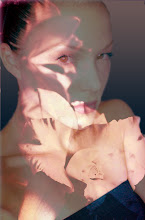ILLUSIVE MUSE
We are all familiar with the age-old traditions of tromp l’oeil
which date back to the Early Classical Roman Period. Since most examples of
ancient trompe l’oeil have been lost due to environmental conditions over time,
our most complete record of such painting were discovered when the ancient city
of Pompeii was unearthed. The eruption
of Mount Vesuvius was so great that it effectively mummified the entire city,
thus, leaving it magnificently preserved nearly 2,000 years later.
Through time, trompe l’oeil has maintained its relevance as
painting and perspective techniques have grown ever more nuanced. Ever popular
in Europe, it has made frequent appearances in art, architecture, furniture and
fashion. In the Moderne Period, the Institut Geurlain was famously filled with
playful trompe l’oeil architectural details and a decade later, Hermes dedicated
an entire line to the method.
Today, we see trompe l’oeil modernized with some
of the most notable applications found street art. The surrealistic approach to
design adds a level of whimsy that kindles our imagination….and, after all, isn’t
that what good design should do?
Hermes Dress
Fornasetti
Chanel "Tattoos"
Street art by the prolific genius Banksy
D'Espresso, NYC












No comments:
Post a Comment